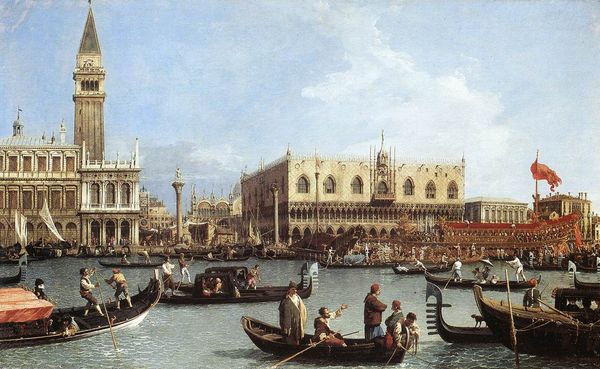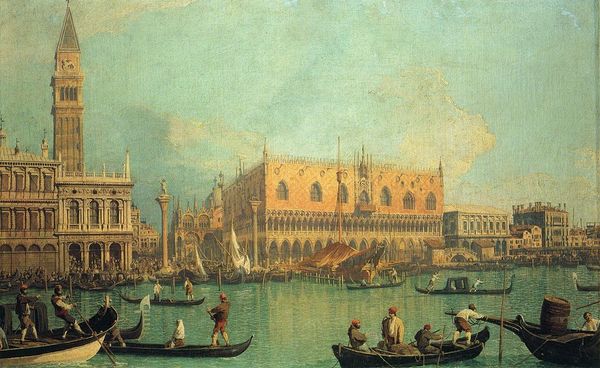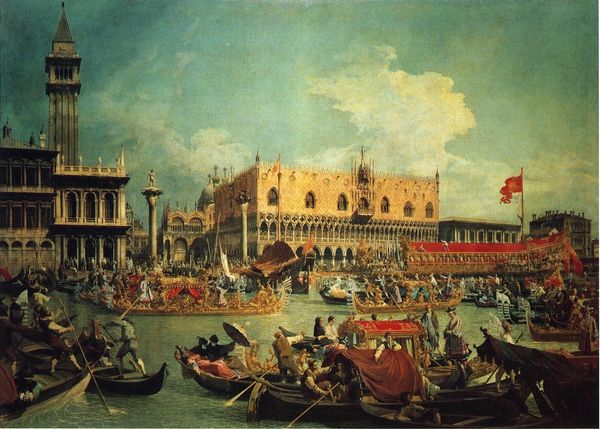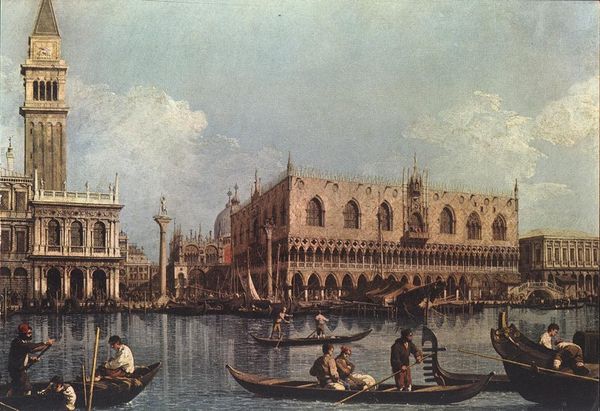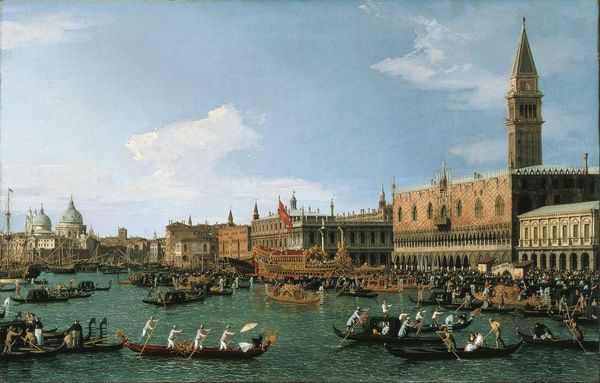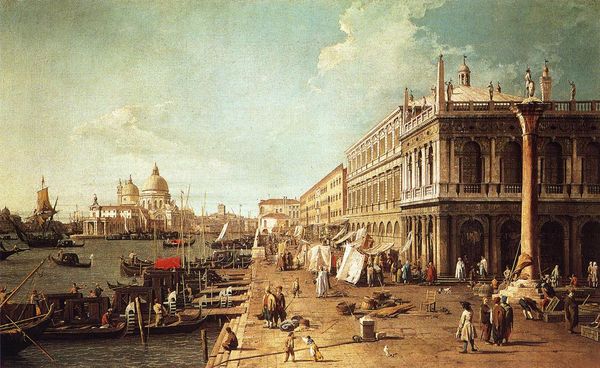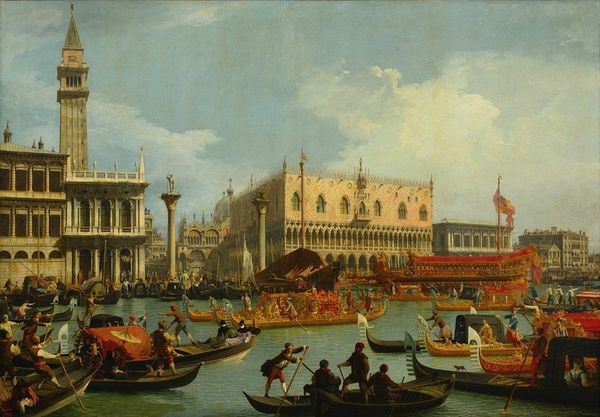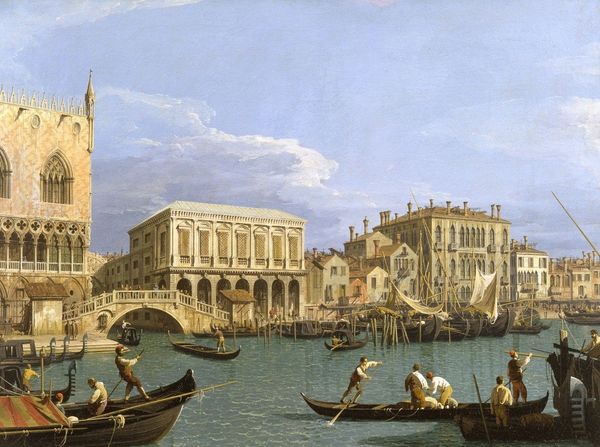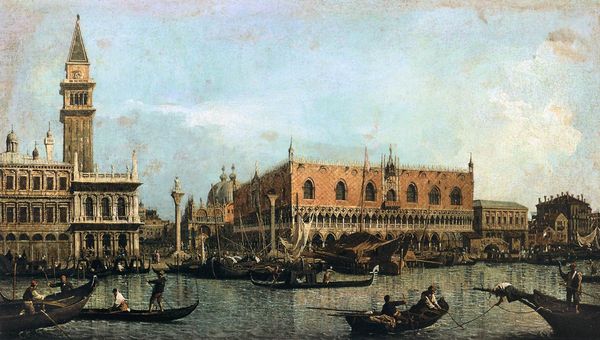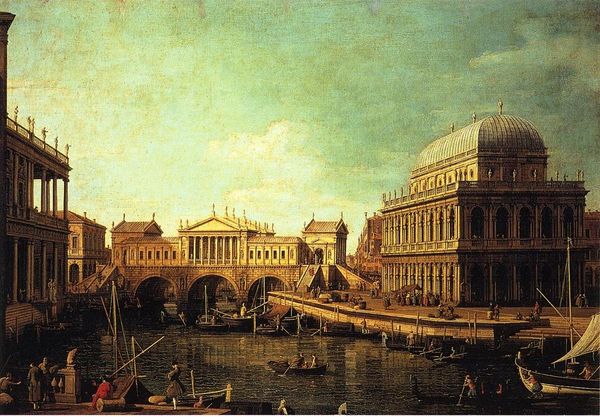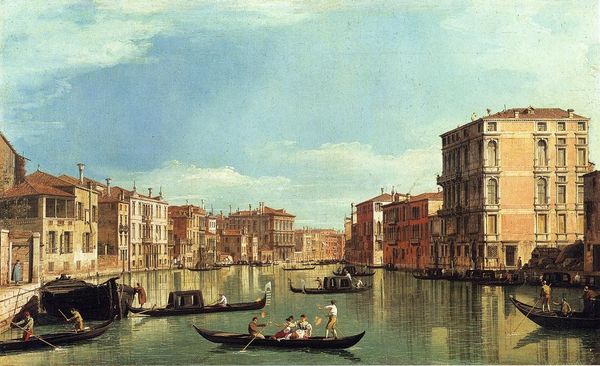
Piazzetta and the Doge's Palace from the Bacino di San Marco 1737
0:00
0:00
canaletto
Private Collection
painting, oil-paint
#
boat
#
venetian-painting
#
baroque
#
ship
#
painting
#
oil-paint
#
vehicle
#
landscape
#
impressionist landscape
#
oil painting
#
water
#
cityscape
#
genre-painting
Dimensions: 40.25 x 80 cm
Copyright: Public domain
Curator: I’m immediately struck by how static and stage-like everything feels. Even the water seems frozen in place. What do you think? Editor: Well, let's begin by situating ourselves with Canaletto’s "Piazzetta and the Doge's Palace from the Bacino di San Marco," created in 1737 using oil on canvas. For many, this painting serves as a potent symbol of Venice itself. I wonder how it informs our modern-day relationship with this iconic location? Curator: It does feel rather constructed, doesn't it? The light is so even, almost artificial, illuminating every detail of the buildings and the bustling life on the water. The colors almost present a romantic view of the area and of its history. Editor: Precisely. This calculated presentation was critical, feeding the Venetian brand during an era when the city sold itself as a destination, a playground for the European elite. It's propaganda, of course. The gleaming façade obscures Venice's deep class divisions and diminishing power. Curator: And I think about the psychological impact of this perfected imagery. Is it escapism? Does it inspire civic pride? Or does it deepen the sense of Venice as an untouchable icon, distanced from everyday reality? Editor: Possibly all of the above. Consider the significance of the winged lion atop that column, the symbol of Venice itself. Its placement reinforces Venetian authority, gazing protectively over the waterways, ensuring its dominance visually. The watercraft symbolize connectivity with international trade and commerce. Curator: So it functions as a constant visual reminder of Venetian power. This connects back to the emotional appeal of established dominance over the collective of the people living there. But who was this accessible to? How did Venice handle the distribution of its own image and brand to people far away or not lucky enough to find themselves in this location? Editor: That's a crucial point. Canaletto’s workshop produced countless versions of scenes like this. The rise of the Grand Tour and the print market allowed for wider dissemination, perpetuating a carefully constructed narrative of Venice. And these canvases, distributed worldwide, created expectations that visitors sought to confirm with their own eyes. Curator: And to this day, in all kinds of media we echo this. I wonder how the artist viewed himself contributing to it. Is it really just documentary in aim? Editor: Not entirely. I believe the lasting appeal of "Piazzetta and the Doge's Palace" lies not only in its accuracy, but its curated viewpoint and its timeless nature as both record and enduring image, influencing perception, perpetuating myths, and shaping historical narratives about power. Curator: A painting full of meaning, beyond what it seems to display on its surface.
Comments
No comments
Be the first to comment and join the conversation on the ultimate creative platform.
